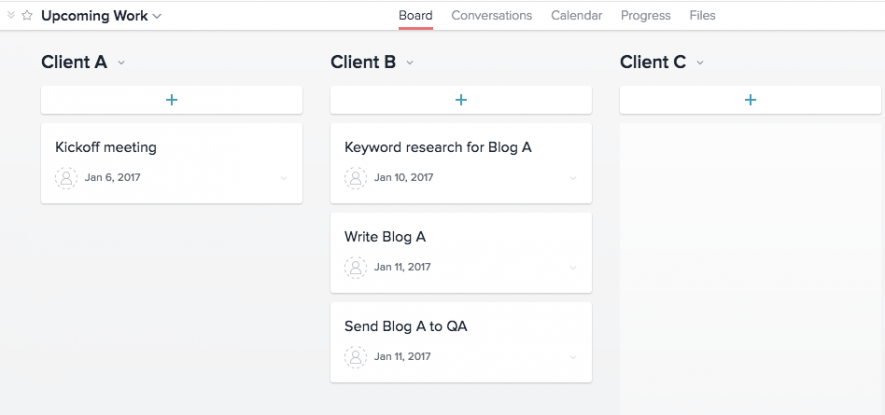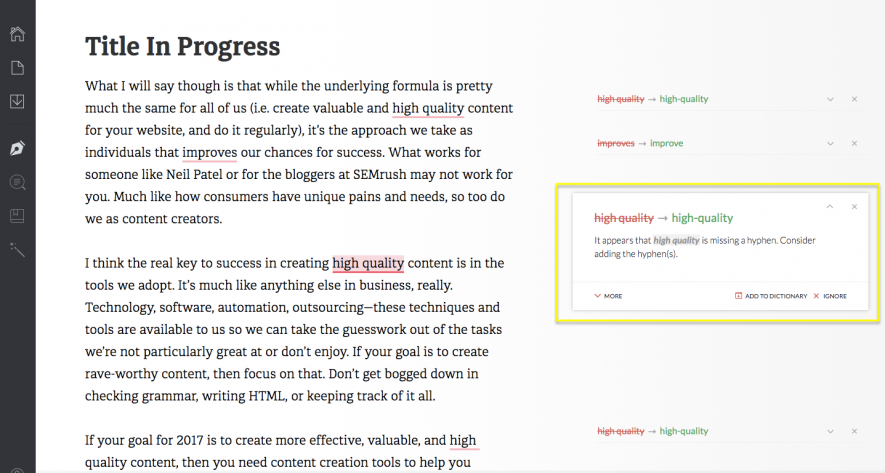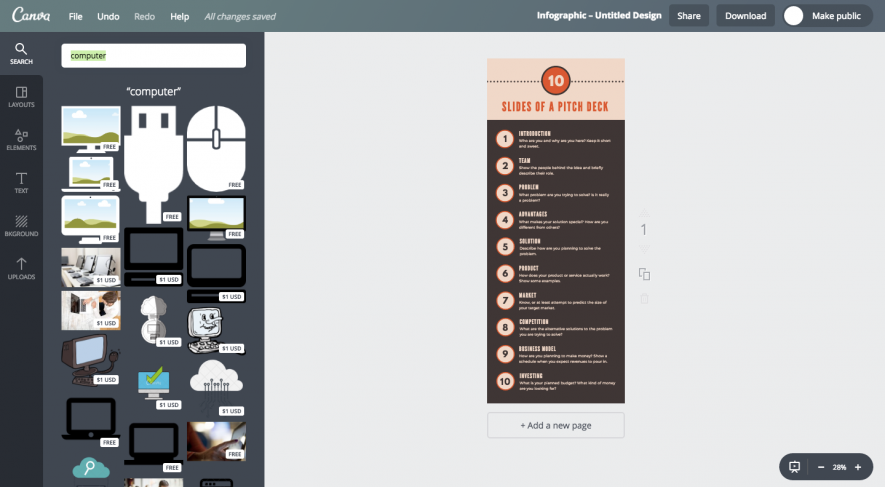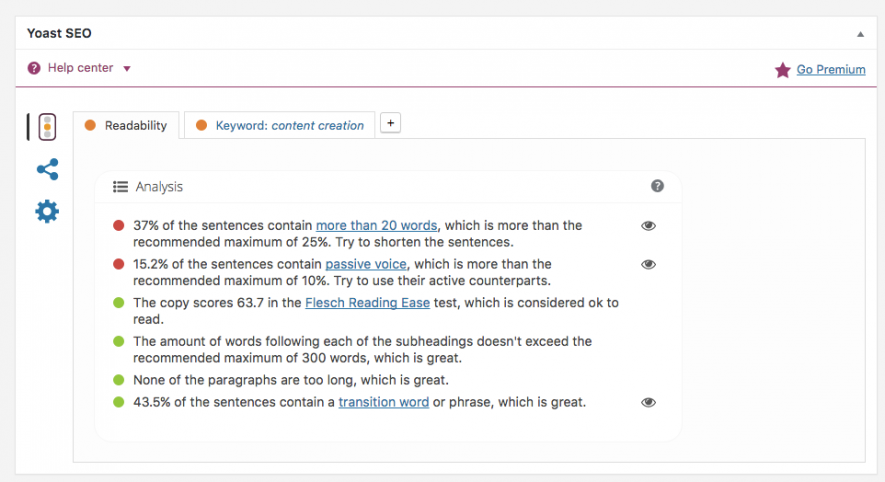Nathan Oulman 16 Tools to Take the Guesswork Out of Creating High-Quality Content 51 Wow-Score The Wow-Score shows how engaging a blog post is. It is calculated based on the correlation between users’ active reading time, their scrolling speed and the article’s length. Learn more 16 Tools to Take the Guesswork Out of Creating High-Quality Content Nathan Oulman
- 56
- 31
- 4
- 20
- 2
Is there a secret to improving your site’s ranking in search? Not really. Google search algorithm changes are well-publicized and leading content marketers are more than happy to share the keys to their success with others.
What I will say though is that, while the underlying formula is pretty much the same for all of us (i.e. create valuable and high-quality content for your website, and do it regularly), it’s the approach we take as individuals that improves our chances for success. What works for someone like Neil Patel or for the bloggers at SEMrush may not work for you. Much like how consumers have unique pains and needs, so too do we as content creators.
I think the real key to success in creating high-quality content is in the tools we adopt. It’s much like anything else in business, really. Technology, software, automation, outsourcing—these techniques and tools help us take the guesswork out of the tasks we’re not particularly great at or enjoy. If your goal is to create rave-worthy content, then focus on that. Don’t get bogged down in checking grammar, researching keywords, or keeping track of it all.
If your goal for 2017 is to create more effective, valuable, and high-quality content, then you need content creation tools to help you achieve it. (And if this isn’t one of your goals, what are you waiting for?)
16 Tools to Take the Guesswork Out of Creating High-Quality Content
It doesn’t matter if you’re a blogger, content marketer, independent business owner, or assistant to the CEO of a large corporation. If you’re taking the time to create content, then you need tools to help you knock it out of the park.
In the following list of content creation tools, I’ve tried to include something for every step of your process (and possibly some others you may not have considered before). The key here is to make use of tools that are lightweight, non-intrusive and that will simplify the work you need do outside of writing stellar copy.
Let’s start at the beginning:
Workspace
#1: Workfrom
If you’re a work-from-home content creator, you know how hard it is to stay motivated when you’re surrounded by distractions all day. For those of you who enjoy the independent content creation process, but still want to be surrounded by others to keep you energized, I’d suggest using Workfrom. It’s a free app that helps you find local co-workspaces (or even local coffee shops, libraries, etc.) where you can work from.
The Workfrom Community is an added bonus that helps creatives connect online and in-person with other like-minded individuals and collaborators.
#2: Coffitivity
Coffitivity is another tool you can use if you’re in need of community-generated inspiration… without actually going out into the community. If you work best with ambient noises, try this app. You can add the noises of a coffee shop, university campus, and even a lunchtime restaurant crowd to your workspace.
#3: StayFocusd
Working from a computer, tablet, or smartphone is awesome—everything you could ever need is available at the touch of a button. But working digitally has its drawbacks too. If you find that you’re easily distracted by:

Social media

And the news

Then you should try the StayFocusd Chrome extension. Once enabled, it keeps you away from those distracting websites and has you working more productively throughout the day.
#4: Asana
Once your physical and digital workspaces are in order, it’s time to clean up your project tracking and organization. This may not seem like it matters much to the content creation process, but it will if you have too much on your plate to stay on top of.

There are a myriad of project management and workflow tools to use, but Asana has a highly intuitive and flexible interface. So, for content creators that prefer to use boards to break out tasks, there’s something for you. For project managers who prefer calendar scheduling, they’ve got a view for that as well.
Remember: the whole point in using these tools is to cut down on the time you spend outside of writing content. By thoroughly documenting and organizing your content pipeline in a workflow tool, you’ll cut down on time spent hunting down project specs, delivery requests, and so on.
Brainstorming
#5: Feedly
If you’re responsible for generating new topics, then you know how difficult that can be after a while. One of the best ways to get around this hurdle is to stay up-to-date on topics related to your niche. Rather than subscribe to a number of newsletters that pop up in your inbox all day, distracting you from writing, import them all into a news aggregator like Feedly.
#6: Blog Topic Generator
If you’re still starved for inspiration and are desperate to find something new to write about, try playing around with Hubspot’s Blog Topic Generator tool.

Now, that’s not to say you should take those suggested topics and run with them. There’s still research to be done to ensure they’re wholly original and worthwhile explorations for your audience.

But if you’re wanting to cut down on the time you spend trying to brainstorm on your own, this is a great place to start.
#7: Evernote
Sometimes inspiration strikes at inconvenient times: in the shower, on the road, in a meeting, you know how it goes. If you don’t have a pad of paper on you or if your smartphone isn’t synced up to your content management system, be sure to add Evernote to your devices. This way you can capture content ideas, snippets of copy, and general inspiration wherever you are, all in one place.
Creation
#8: Grammarly
Grammarly is an excellent content creation tool, for a number of reasons:
1. It will capture those hard-to-miss issues in spelling and grammar that you might not otherwise see (which is especially helpful if you don’t have a designated QA team member).

2. It will review and suggest edits to text that you’ve pasted into Grammarly. If you enable the OS and Chrome apps, it will also work within any other website where you enter text (like email, WordPress, social media, etc.) as well as on your desktop.
3. It has a clean UI, which makes for a distraction-free writing space.
#9: Hemingway App
The Hemingway app is similar to Grammarly, except that this tool focuses on making your content more easily readable. If you tend to use too many adverbs, overdrawn sentences, or passive voice, use this app to pinpoint those weak spots in your copy and save yourself the trouble of hunting them down on your own.
#10: Plagiarism Checker
There are a number of content aggregation platforms that will automatically notify you if someone has submitted copy that plagiarizes someone else’s work. But if you work on your own or just don’t feel like spending money on one of those tools, this Plagiarism Checker should do you just fine.
#11: CoSchedule Headline Analyzer
There is a science to creating high-quality headlines that draw in more viewers. But do you have the time to re-review those guidelines each and every time you write a new piece of content? Probably not. That’s why CoSchedule’s free Headline Analyzer tool is a must-have. Simply enter the title you’re thinking of using, and then let it tell you what works and what doesn’t.
Graphics
#12: Creative Commons
Did you know that content that includesrelevant, eye-catching imagery is 94% more likely to be viewed than content that does not? The problem with that fact is that you’ll now need to find relevant, high-quality imagery to go along with your relevant, high-quality content. Most of it sits on royalty-free stock photography sites that require a payment in exchange for licensing images. Rather than dip into your revenue stream, check with Creative Commons first.
#13: Jing
Images don’t always need to be super-glossy photography. So long as they’re related to the content you’ve written and serve to enhance your “story”, go for it. If this article can serve as a testament to anything, it’s that screenshots can serve you well if your content covers a tangible idea that can be captured in action.
The Jing screen capture tool is a super convenient app that’s free to download and goes wherever you go, on your desktop or browser.
#14: Canva
Canva may be a design tool, but it was built with the content creator in mind.

The best thing about it? The pre-made templates (which pretty much cover all your needs as a content creator). Infographics. Social media memes. Blog images. Flyers. And more. If you want to give your content an extra boost, but don’t want to wait for a designer to create something for it (or don’t have the money to do so), then keep this tool on hand for when you’re feeling inspired.
WordPress
#15: Yoast SEO
Chances are pretty good that you’re creating content for a WordPress website or blog (since nearly 60% of all websites currently use this CMS). If that’s the case, then you’ve got to use the Yoast SEO plugin.
While its contributions to improving SEO are obvious, what may not be so obvious is how it guides writers in creating high-quality and readable content.

If you’re using the Hemingway App, then this can be your last-minute confirmation that you’ve got clean, well-written content ready to share with your audience. And, if you’re not using the Hemingway App, use this plugin to guide you towards making smart edits to your content before publication.
#16: CoSchedule
Another contribution by CoSchedule, this WordPress plugin helps you plan, schedule, and even promote your content across social media. So if you’ve got a project management tool like Asana helping keep your content creation assignments in line, then you need this tool to keep the content itself on track and moving out the door.
Wrapping Up
At the end of the day, the goal is to create high-quality content that your readers can gain some sort of valuable insights from. So take some time, review your content creation process from start to finish, and you will undoubtedly find a number of ways where you can realistically save time by using content creation tools.
If you’ve already made use of any of the recommendations above or have some suggestions you’d like to contribute, I’d love to hear about your experience in the comments below.



